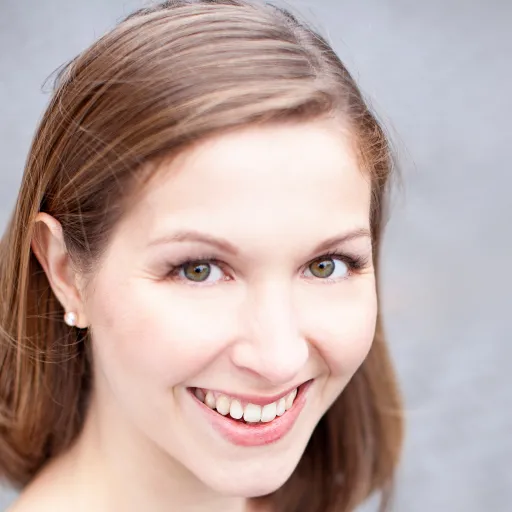Teaching Philosophy
As a voice teacher, I see myself as a facilitator and vocal guide, empowering students to make their own discoveries and decisions. My mission is to teach the whole student and support them as they become members of our artistic community. While content, approach, and timeline vary for each individual, my overarching goal is always to create self-sufficient and independent artists who have a deep knowledge of their own body, instrument, repertoire, and style. I ensure that students have a complete grasp of singing anatomy and function, but combine this attention kinesthetic awareness with imagery and metaphor. Though learning solid technique is central to my teaching, music-making, communication, and artistry are no less important and cannot be separated from good singing. Consequently, students are encouraged to experiment with lots of different kinds of repertoire from Renaissance madrigals and Romantic art song though opera, musical theater, jazz, and contemporary classical and commercial music in order to build their knowledge and hone their expressive skills.
In tandem to this individualized approach to artistic development, I aim to cultivate socially engaged students that know their artistic significance, value diversity, and use their skills to enhance the community around them. In support of this mission, there are five values that anchor my approach to teaching: humanity, community, vocal and mental health, artistry, and student-led learning.
Humanity : I aim to get to know my students as people and understand their personal values, goals, and struggles. The trust between student and teacher that is built by this kind of relationship is vital to successful learning. Perhaps equally important, however, is fostering within each student their own sense of artistic vision and musical disposition so that both the student and teacher can nurture the emerging artist within.
Community : In addition to a focus on knowing and understanding the self, I encourage my students to deeply consider how they, as artists, fit into society and the value their work brings to their community. I hope that they can simultaneously advocate for their work and use their work to advocate for others. I also want my students to be influenced by their community, and to grow through exposure to diverse experiences and values.
Vocal and Mental Health : At the core of our art form is communication, and without a deep knowledge of and healthy approach to vocal technique, students will not have the tools they need to effectively communicate. I ensure that students have a thorough grasp of singing anatomy and function but combine this attention to physical detail with a rich vocabulary of metaphor and imagery that promotes deep kinesthetic awareness. I simultaneously encourage students to pay close attention to their own needs and to prioritize their mental health.
Artistry : Making beautiful and healthy sounds is only the starting point for becoming a fully developed artist. I invite students to think deeply about diction, text, character development, musical expression, and historical context in order to better communicate their artistic intentions. This work invites students to bring their own life experiences to their craft, while also enhancing their imagination and creativity.
Student-led learning : Students are regularly prompted to analyze their own thoughts, actions, and responses in order to become their own best teachers. I invite them to formulate their own ways of describing their experience which leads to better retention and reproduction. Students are encouraged to share ideas and lead presentations during studio class in order to build leadership skills and to promote collegiality and mutual mentorship within the studio community.
Overall, I aim to develop independent, thoughtful, and passionate students that can move on from my studio with a deeper knowledge of their art and of themselves, and thus can enrich both our musical community and society at large.
